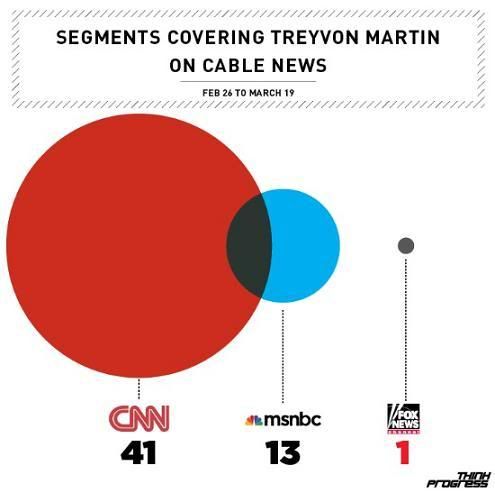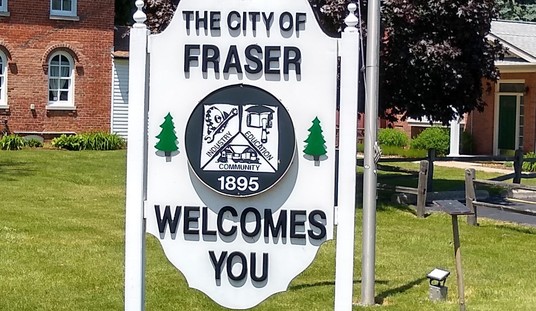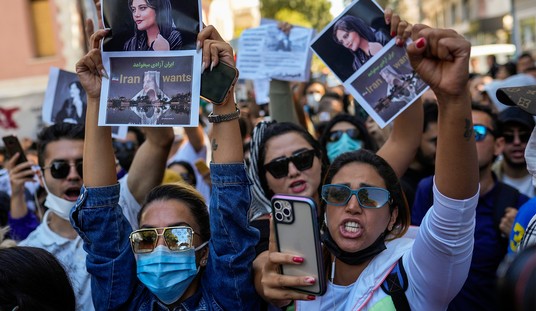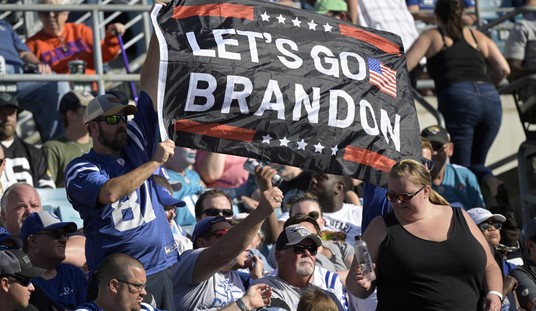
On February 26 in a suburb of Orlando, a Hispanic man, George Zimmerman, shot to death an unarmed African-American teenager, Trayvon Martin. Zimmerman was on neighborhood watch, carrying a pistol. “Zimmerman spotted Martin as he was patrolling his neighborhood on a rainy evening and called 911 to report a suspicious person. Against the advice of the 911 dispatcher, Zimmerman then followed Martin, who was walking home from a convenience store with a bag of Skittles in his pocket.” To date, Zimmerman has not been arrested, but after a media outcry, local and federal grand jury investigations have been opened. Zimmerman contends that he shot Martin in self-defense; there are no eyewitnesses and the details are murky, but at least one witness overheard a confrontation. Presumably, further investigation will be needed before prosecutors can build a case that does not leave the claim of self-defense surrounded by a cloud of reasonable doubt, ending with a Casey Anthony type verdict. There’s been some discussion about Florida’s particularly strong self-defense law, but in any state in the Union, if a jury believes there is a real possibility that Zimmerman acted in self-defense, he’d be acquitted, and if the jury doesn’t, he’d be convicted.
The Martin case is a legitimate local news story, of the type that crops up now and then – in major cities like New York, where I live, we have multiple crime stories a year that involve sensational or particularly tragic facts and – at least at the outset – a significant possibility that injustice will be done either to the victim, the defendant, or both. Such cases test public confidence in the competence and fairness of local law enforcement, and sometimes find both to be wanting.
But the media feeding frenzy over this particular story – one out of the thousands of homicides in this country – in apparent response to a left-wing campaign to keep it in the national news, reflects at best a loss of perspective and at worst a cynical effort to inflame racial division in an election year.
A change.org petition asking for Zimmerman’s prosecution has drawn more than 420,000 signatures and an attorney for the Martin family has asked for an FBI investigation.
“Our thoughts and prayers go out to Trayvon Martin’s family. But obviously we’re not going to wade into a local law-enforcement matter,” White House Press Secretary Jay Carney said when he was asked about Martin’s death at today’s briefing.
On the scene is a man with his own rap sheet of inciting murderous rioting:
Later Tuesday, civil rights activist Al Sharpton is expected to join Sanford city leaders in an evening town hall meeting to discuss with residents how the investigation is being handled. On Monday, students held rallies on the campus of Florida A&M University in Tallahassee and outside the Seminole County Criminal Justice Center, where prosecutors are reviewing the case to determine if charges should be filed.

Martin has merited coverage by the New York Times, the Washington Post, and USA Today. The story has been covered by all three broadcast networks and extensively on cable. But there is one outlet that has barely mentioned Trayvon Martin – Fox News.
Now bear in mind that the very people pushing a “national conversation” on George Zimmerman are not always so concerned that the media give a full and fair accounting of our criminal justice system’s fairness to victims of crimes. They are still complaining, a quarter century later, that the Massachusetts prison furlough program became an issue in the 1988 presidential election, and that a few obscure local ads even mentioned one particular graphic crime, committed by an inmate named Willie Horton. Somehow, even though it directly involved the judgment of a presidential candidate, that was not deemed fit for discussion.
Or turning to the present day, if the point is to use crime stories to dramatize real world concerns, what about a story that affects a lot more people than the fairness and competence of the Sanford, Florida police department: incursions into the U.S. by Mexican drug cartels? You can easily find dramatic individual stories written up in the local and sometimes national print media – a quick Google search turned up these examples:
March 14, 2012: “An alleged lieutenant of the Sinaloa cartel has been indicted in the U.S. for conspiracy in the kidnappings and deaths of a West Texas man and three New Mexico men.”
March 3, 2012, a story Erick wrote up on RedState: “A Mexican drug leader. Oscar ‘El Apache’ Castillo Flores, was released by the United States back to Mexico and immediately set about reacquiring power and killing people. He eventually is gunned down himself. His death happened this past week.
In September of 2011, Oscar’s brother Omar was gunned down in Texas. About the same time, someone kidnapped his wife from a Walmart in Brownsville, TX.”
February 16, 2012: In a NY Times story on a Texas state government website compiling stories of Texans terrorized by the drug gangs: “Col. Steve McCraw, the director of the Texas Department of Public Safety, the state’s top law enforcement agency, told a Congressional subcommittee in May that the agency had identified 22 homicides, 24 assaults, 15 shootings and 5 kidnappings in Texas since January 2010 that were directly related to the Mexican cartels.”
December 16, 2011: “[A] new federal court case outlines how Mexican drug cartels have teamed up with violent street gangs to operate inside the United States.
The case involves dozens of members of the Barrio Azteca gang charged with operating a massive drug-trafficking and money-laundering enterprise. A handful of members have already been convicted and were sentenced in Texas this week, while others face trial next spring for racketeering, murder, drug offenses, money laundering and obstruction of justice.
Information released by the Department of Justice (DOJ) this week says Barrio Azteca is also responsible for the March 2010 murders in Juarez of a U.S. Consulate employee, her husband and another associate.”
September 25, 2011: “Mexican police are investigating whether the death of a woman found decapitated at the Texan border is the third killing made in retribution for posts about drug cartels on social networking websites.
The woman, identified by local officials as Marisol Macías Castañeda, a newsroom manager for the Primera Hora newspaper, was found in Nuevo Laredo next to a handwritten note claiming she was murdered for posts about the Zetas cartel, which is believed to dominate the area’s drug trade to Laredo, Texas.”
March 3, 2011: “A man who stole drugs from a Mexican cartel was bludgeoned, stabbed and then decapitated in a suburban Phoenix apartment — a gruesome killing that police say was meant to send a message that anyone who betrays the traffickers will get the same treatment.”
December 8, 2009: NY Times story on a San Diego trial of a Mexican drug cartel; “authorities in Kansas City, Mo., and Miami are also investigating the Mr. Rojas-López’s squad for drug trafficking and killings in their cities.”
December 4, 2009: “he raging drug war among cartels in Mexico and their push to expand operations in the United States has led to a wave of kidnappings, shootings and home invasions in Arizona, state and federal officials said at a legislative hearing.”
This is even before we get to the matter of the Obama Administration’s direct implication in the cartels’ crimes via Operation Fast and Furious, the misguided gun-running scheme that ended up putting weapons in the hands of the cartels that killed, among others, a U.S. Border Patrol agent.
As you can see, the cartel story has not, of course, been completely ignored; the New York Times has reported on it, federal hearings have been held, indictments handed down, and the state governments of Texas and Arizona are concerned. It is legitimately a major story, and should be covered as one. But the relevant point here is that no individual case has been given the kind of maudlin saturation coverage of the 41 CNN stories in less than a month on the Zimmerman/Martin case cited by ThinkProgress, nor are left-wing organizations pressing for justice for the cartels’ many victims. (To the contrary, ThinkProgress has blasted the Texas government website as a ‘Border Vigilante Website’ and characterized discussions of violence at the border as “Fear-Mongering.”)
The reality is that the Trayvon Martin case is being pushed by left-wing organizations eager to provide a backdrop of racial strife to this year’s elections – a dangerous tactic, given how frequently popular agitation over these kinds of racially divisive stories have led to riots that leave people dead or homeless and local businesses and jobs destroyed. And that while activists on both sides of the aisle often try to get big media to focus on particular crime stories that advance some national political or cultural narrative, the media is much more apt to be receptive to such campaigns by the left than the right. That’s not to deny that the media sometimes goes crazy over cases with no particular political significance, like the Casey Anthony and Natalee Holloway cases, but those cases didn’t damage any of the left’s narratives.
Serious news organizations always have to make choices in what they cover, and even news consumers who understand the media’s biases are subject to the pervasive influence of decisions to allocate coverage. As I’ve noted before, for example, the media often puts a face to death penalty stories and tends to lump the death penalty and abortion issues together, while ignoring the fact that there are as many abortions every day as there have been executions in the past 80 years. When one local story is magnified many times over and personally dramatized, in the process consuming vast news resources, while stories affecting many more people are reduced to dry recitations of numbers with no followup and no coherent narrative, the viewing public is given a false picture of the world. That’s no service to anyone but the activists of the left.














Join the conversation as a VIP Member